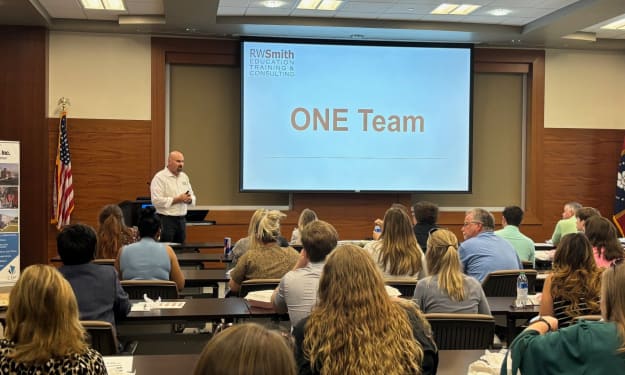Gene Therapy and What Does This Mean For Me?
What is Gene Therapy?

What is Gene Therapy?
Gene therapy is the transmission of genetic information to deal with an illness. Although the theory has prevailed for many decades, clinical research appeared in 1990. The original clinical application was commenced at the US National Institutes of Health for a rare immunodeficiency affliction (Anguela & High, 2019). Since then, 2,500 additional clinical applications have been introduced for a vast spectrum of treatments, from an array of monogenic diseases to infectious diseases, complex neurodegenerative complications, and even cancer (Anguela & High, 2019).
The capability to carry out site-specific alterations to the human genome has been an ambition in medicine since the understanding of the gene as the primary unit of heredity (Gonçalves & Paiva, 2017). Therefore, gene therapy is known as the capacity of genetic advancement to correct modified genes or site-specific conversions that target therapeutic management (Gross et al., 1989). This therapy became achievable through genetics and bioengineering, which enabled manipulating vectors to distribute extrachromosomal information to target cells. One of the primary focuses of this procedure is developing distribution vehicles called vectors that are essentially plasmids, nanostructured, or viruses (Anguela & High, 2019). The viruses are further explored due to their supremacy of penetrating cells and embedding their genetic substance.

James Watson
In 1991, James Watson announced that “many people say they are worried about the changes in our genetic instructions (Gross et al., 1989). But these (genetic instructions) are merely a product of evolution, shaped so we can adapt to certain conditions which might no longer exist. We all know how imperfect we are. Why not become a little better apt to survive?” (Gonçalves & Paiva, 2017)
Until 1950, insufficient knowledge was established as to the physical structure of genes, which was when the American biochemist James Watson, and the British biophysicist, Francis Crick, demonstrated the radical design of the double-strand DNA (Gonçalves & Paiva, 2017). In 1970, scientists came upon a series of enzymes that facilitated the separation of the genes in predetermined locations along the DNA molecule and their reinsertion in a reproducible procedure (Gonçalves & Paiva, 2017). These genetic advances developed the plot for the evolution of gene architecture with the manufacture of modern pharmaceuticals and antibodies (Gonçalves & Paiva, 2017). As of 1980, gene therapy becomes further integrated by scientists around the world.
In its most straightforward explanation, the objective of gene therapy for genetic diseases is a long-term character of the converted gene at levels that are high enough to be therapeutic and a procedure consistently called augmentation gene therapy (Gonçalves & Paiva, 2017). The changed gene is most often an ordinary replicate of a mutated gene. One can likewise overcome the aspect of an unfavorable gene by using RNA interference or genome editing devices.

How Does This Effect Me Now?
Analysts at the University of Helsinki have produced the fascinating revelation that listening to classical music modifies the function of your genes (Kanduri et al., 2015). Scientists collected blood samples from research participants before and after listening to Mozart’s Violin Concerto No. 3 in G major, K.216. Analysts discovered that music precisely influences individual RNA, proposing that listening to music becomes further profound within its extraordinary benefits than previously assumed. Music can influence the absolute core of our biological being (Koelsch, 2014).
This is an excellent measure of observation into how precisely music guides human beings. Experts have formerly used PET scans to examine the brain as it transforms while listening to music. With the inauguration of genomics, analysts can study even closer by sampling blood and determining its molecular properties. The research was done on 48 individuals who participated in a recent investigation, and they were split into two groups: those who had a musical background and those who were inexperienced. What the scientists encountered in the talented group was startling.
The exercise brought to light substantial genetic benefits for the musically experienced arrange after listening to classical music. While being exposed to the music, they observed increased definition of the glucocorticoid receptor, which controls stress, depression, and even addictive behaviors. In addition to this, listening to music is beneficial for inhibiting dopamine reuptake, which is the brain’s molecule that regulates the reward center.
Notably, genes that are susceptible to physiological motivations that were earlier considered to be tissue-specific, including and genes engaged in neuroendocrine channels such as hormone receptors, neurotransmitter receptors, are revealed in the peripheral blood (Meyer, 1961). Because of this fantastic discovery, peripheral blood has been accepted as an intermediary in several investigations when specific brain study is not feasible. This is the most beneficial within behavioral and neurodegenerative research (Mohr & Liew, 2007). In the aftermath of all these discoveries, a subset of the molecular mechanisms established and determined within the study may genuinely express the transcriptomic modifications in the brain after listening to music.

References
Anguela, X. M., & High, K. A. (2019). Entering the Modern Era of Gene Therapy. Annual Review of Medicine, 70(1), 273–288. https://doi.org/10.1146/annurev-med-012017-043332
Gonçalves, G. A. R., & Paiva, R. D. M. A. (2017). Gene therapy: advances, challenges and perspectives. Einstein (São Paulo), 15(3), 369–375. https://doi.org/10.1590/s1679-45082017rb4024
Gross, G., Waks, T., & Eshhar, Z. (1989). Expression of immunoglobulin-T-cell receptor chimeric molecules as functional receptors with antibody-type specificity. Proceedings of the National Academy of Sciences, 86(24), 10024–10028. https://doi.org/10.1073/pnas.86.24.10024
Kanduri, C., Raijas, P., Ahvenainen, M., Philips, A. K., Ukkola-Vuoti, L., Lähdesmäki, H., & Järvelä, I. (2015). The effect of listening to music on human transcriptome. PeerJ, 3, e830. https://doi.org/10.7717/peerj.830
Koelsch, S. (2014). Brain correlates of music-evoked emotions. Nature Reviews Neuroscience, 15(3), 170–180. https://doi.org/10.1038/nrn3666
Meyer, L. B. (1961). Emotion and Meaning in Music (Phoenix Books). University of Chicago Press.
Mohr, S., & Liew, C. C. (2007). The peripheral-blood transcriptome: new insights into disease and risk assessment. Trends in Molecular Medicine, 13(10), 422–432. https://doi.org/10.1016/j.molmed.2007.08.003
About the Creator
Dr. Reanna Waugh PhD
Dr. Reanna Waugh PhD Founder and CEO of Waugh's Holistic Wellness Center, Student, second PhD in Clinical Psychology, Life Coach at WHWC currently in Gladstone, MI (USA) with her husband, Kyle Waugh, a retired Veteran of the Air Force.
Enjoyed the story? Support the Creator.
Subscribe for free to receive all their stories in your feed.






Comments
There are no comments for this story
Be the first to respond and start the conversation.